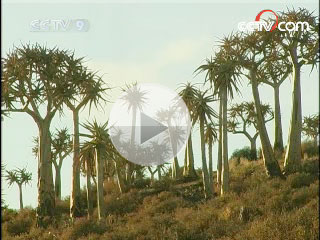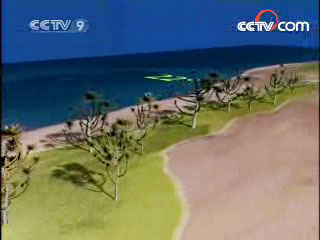------Program code: NS-080606-04053 (what's this?)
Source: CCTV.com
06-06-2008 11:20
If climate change is already killing Quiver trees then is there anywhere they can survive? The other end of their range is 2000 km south, where it's cooler. And Wendy heads off to see what’s happening to the species there. Guy, meanwhile, is driving north of Vanrhynsdorp, to his research group’s experiments in the desert, to see if his climate change computer predictions are right, based on field evidence.
 |
Guy Midgley, South African National Biodiversity Institute: Pretty much as we saw in the model, where we try to simulate future climates. This accelerates climate change and takes us forward in different ranges of years. In fact what Charles has done is used chambers of different heights which give a range of temperature increases so we have 2 degree increases, 3 degree increases, 4 degree increases that take us to 2030, 2050 and 2070 to if there’s a kind of threshold warming which is going to be a problem.
 |
Charles Musil, South African National Biodiversity Institute: Essentially what we have here is light passing through a transparent barrier the same as the greenhouse effect, short wave radiation passes through, converts to longer wave warming radiation, and the air is trapped inside and basically warms.
Guy Midgley, South African National Biodiversity Institute: This is an example of something that has died – it looks like almost a little barnacle. Here’s a live one, there’s a dead one.
Guy and Charles have created a way of simulating climate change that shows that a 2 degree increase in temperature is enough to kill indigenous plants. The temperature has already increased by a quarter of a degree in the last10 years. And by 2050, Guy thinks, it'll be 2 degrees hotter.
Wendy Foden, South African National Biodiversity Institute: The whole of the ecology of an area, all the different living and non-living pieces of an environment that interact together, how they interact, why and if you change things and if you change things, like, for example, turn up the heat in the climate, then what happens?
Charles Musil, South African National Biodiversity Institute: Ahh the activity’s too low. Oh, too low. It won’t fire. No, essentially these plants have shut down, completely.
Charles has just got a new gadget for measuring photosynthesis. That’s how plants use light to convert carbon into energy.
Charles Musil, South African National Biodiversity Institute: No, they’ve shut down.
The plants photosynthesis doesn't seem to want to register on the scale. A succulent in a pot though, proves the gadget is working but that the plants in the ground are trying to survive a fierce climate by shutting down.
Guy Midgley, South African National Biodiversity Institute: I think the issue is that are they shutting down for longer and longer as the conditions get less and less optimal, more and more stressful. Our experiments are basically telling us that we don’t have very much time to turn around the global warming trend. Some of our experiments suggest that 2 degrees is probably too much for many species so while around the world 2 degrees is seen as a safe level of climate change, I would be a little bit worried that 2 degrees is a bit high for the Succulent Karoo.
Two degrees of future temperature increase hasn’t yet hit the Niewoudtville forest, 2000km south of the dead trees of Brandberg.
